Have you ever wondered who the first influencer was and what is the history of influencer marketing? Long before social media, people with influence were already promoting products, but they didn’t have an official title. Back then, people relied on recommendations from print ads, radio, and TV, where the early stages of influencer marketing were already happening.
Believe it or not, top influencer marketplaces have been around since the 1930s, and it even dates back to ancient Rome when gladiators promoted products! But the term “influencer” has only become an actual word in the last decade and was officially added to the dictionary in 2023.
Influencer marketing has evolved over the years and is now a key strategy for brands to grow their reach, increase brand awareness, and drive conversions.
In this article, we’ll explore the history of influencer marketing in detail. We’ll uncover who the first influencers were and explain why and how influencer marketing began to take shape.
Stick around, because this is going to be a blast. Let’s get started, shall we?
Who Was the First Influencer in History?
People have been shaping trends and opinions for centuries, so the concept of “influencers” isn’t really new. For instance, Julius Caesar impacted both Roman politics and fashion while, Cleopatra influenced powerful leaders and set beauty standards.
Leonardo da Vinci’s work was important to the Renaissance, and Madame de Pompadour was a trendsetter at the French court. Marie Antoinette’s fashion choices influenced the upper class and inspired revolutionary feelings. Although they weren’t digital creators, these historical figures greatly impacted culture and behavior in their time.
The Path to Today’s Influencer Marketing
Influencer marketing has come a long way from its early days! Let us take you on a journey through its history and see who the first influencers were.
105 BCE – 404 CE: Ancient Roman billboards
Roman gladiator games started in 105 BCE and became extremely popular until Emperor Honorius banned them in 404 CE. These games were some of the biggest events in ancient Rome, drawing large crowds. To generate excitement and attract spectators, organizers used billboards around the city to advertise the matches. These ancient advertisements were somewhat like today’s promotions for sports events, though the stakes were much higher.
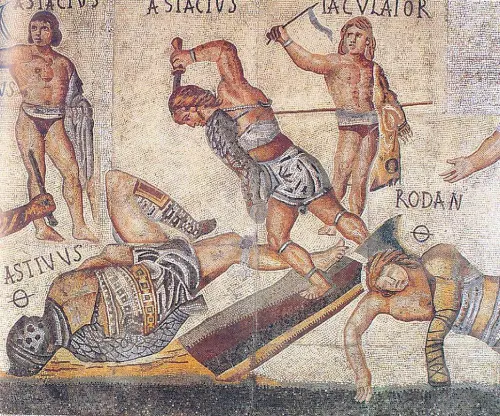 105 BCE – 404 CE_ Ancient Roman billboards
105 BCE – 404 CE_ Ancient Roman billboardsGladiators who performed well became famous and were seen as celebrities. Their fame even led them to endorse products like oil and wine, similar to how modern athletes might promote products today.
1760: The Early Influencers
In the 18th century, marketers began using influential people to promote their products. One early example is Josiah Wedgwood, a British potter. In 1765, his pottery was endorsed by Queen Charlotte, who gave him the title “Her Majesty’s Potter.”
 1760_ The Early Influencers
1760_ The Early InfluencersThis royal approval was highly valuable because the Queen was a major influence at the time. Wedgwood cleverly used this endorsement to market his pottery as “Queensware,” positioning it as a luxury item. As a result, his pottery became very popular, and people eagerly sought it out. This shows how powerful endorsements from influential figures can be in boosting a brand’s success.
Wedgwood gained international fame by creating items featuring the royal family and attracting many high-profile clients. His brand remains well-known today, maintaining the classic style of its 18th-century roots.
1882: Lillie Langtry and the Birth of Modern Advertising
In 1882, actress and producer Lillie Langtry made history as the first woman to endorse a commercial product. Her appearance in an advertisement for Pears Soap became a landmark moment in the evolution of modern advertising.
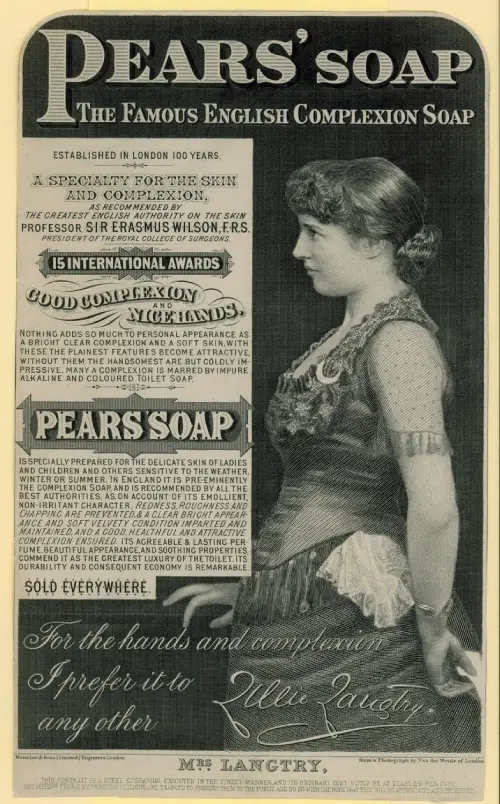 1882_ Lillie Langtry and the Birth of Modern Advertising
1882_ Lillie Langtry and the Birth of Modern AdvertisingIn the 19th century, the Aesthetics Movement made high-quality products more affordable for everyone, not just the wealthy. This shift meant companies needed better ways to advertise and reach a broader audience. Thomas Barratt, known as the “father of modern advertising,” saw the value in using famous people to promote these new, more accessible products.
Lillie Langtry was picked to promote Pears Soap because of her famous “ivory complexion,” which matched the clean, fresh image the brand wanted to show. Her success in both acting and advertising made her a powerful influencer, paving the way for celebrity endorsements in marketing.
1890: Nancy Green becomes the spokesperson for Aunt Jemima.
In 1890, the R.T. Davis Milling Company chose Nancy Green, a Black woman, to be the face of their new pancake mix brand, Aunt Jemima. Inspired by a character from a popular minstrel show, Green’s role gave the brand a distinct personality, making Aunt Jemima a household name for over 100 years.
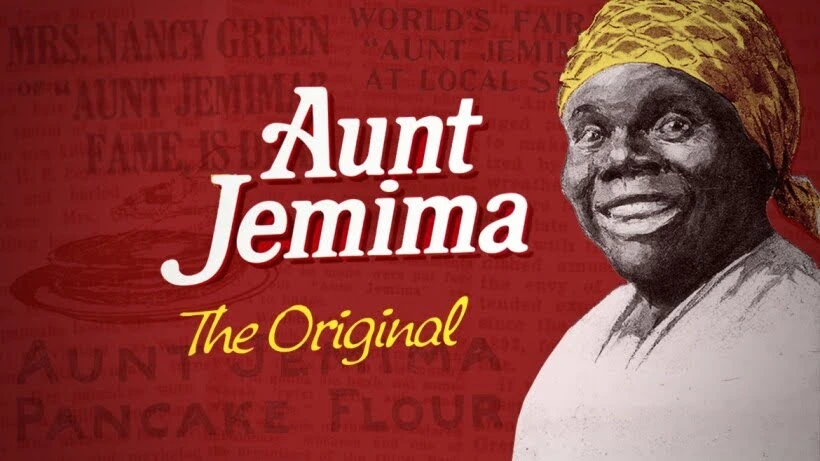 1890_ Nancy Green becomes the spokesperson for Aunt Jemima.
1890_ Nancy Green becomes the spokesperson for Aunt Jemima.Even though Nancy Green helped make the brand famous, there’s little proof that she got much financial reward for her efforts.
Later in 2020, Quaker Oats admitted that the Aunt Jemima brand was based on racial stereotypes and decided to change the name and remove the image. Even though Aunt Jemima is being replaced, some groups are trying to keep Nancy Green’s legacy alive, recognizing her as one of the first Black influencers in American advertising.
1905: Fatty Arbuckle and Murad Cigarettes
A famous early example of celebrity support in creating influencer marketing campaigns is when Roscoe “Fatty” Arbuckle promoted Murad, a Turkish cigarette brand. The story says Murad’s team wanted him to smoke their cigarettes on stage, but Arbuckle refused, worried it might make him cough or hurt his voice. Instead, he agreed to promote the brand in print ads.
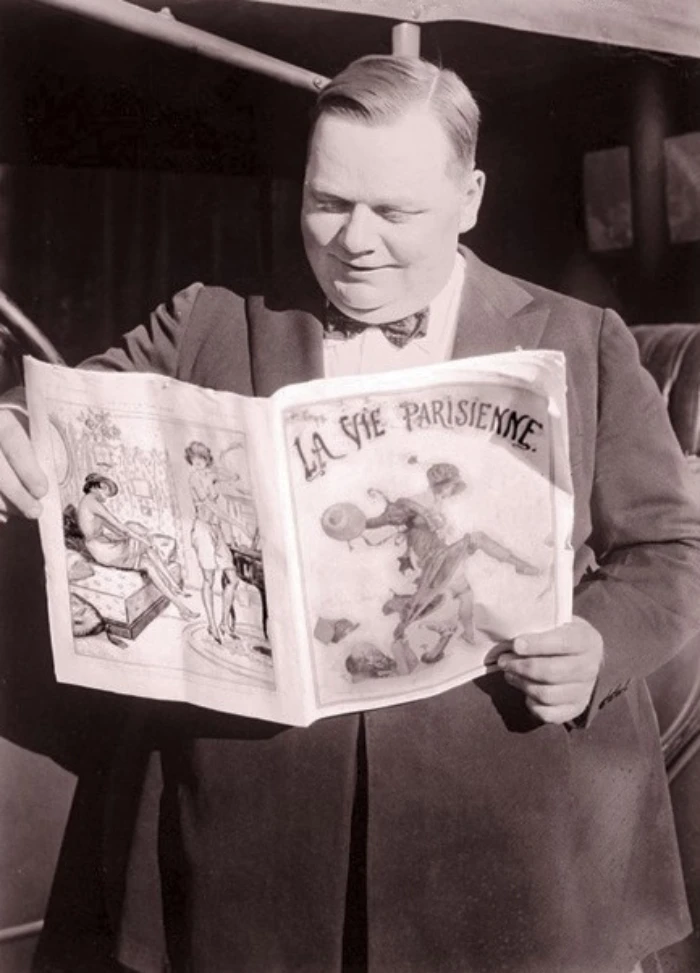 1905_ Fatty Arbuckle and Murad Cigarettes
1905_ Fatty Arbuckle and Murad CigarettesThis event is known as a big change in marketing, as companies began to see how powerful celebrity collaborations could be. Arbuckle’s promotion showed how successful using famous people to promote products could be, starting a trend that led to more celebrity supporters. This helped shape how modern influencer marketing works today.
These were just examples of the first influencers in the history of influencer marketing. Now let’s take a look at the current state of influencer marketing and when did influencers become a thing.
1931: Fictional Influencers
The next big thing in marketing was the use of fictional characters as influencers. A great example is Coca-Cola’s use of Santa Claus starting in 1932. During the tough times of the Great Depression, Coca-Cola brought a bit of cheer with Santa’s jolly image. By linking their brand to Santa’s festive and happy persona, they not only lifted people’s spirits but also made their brand synonymous with joy and celebration.
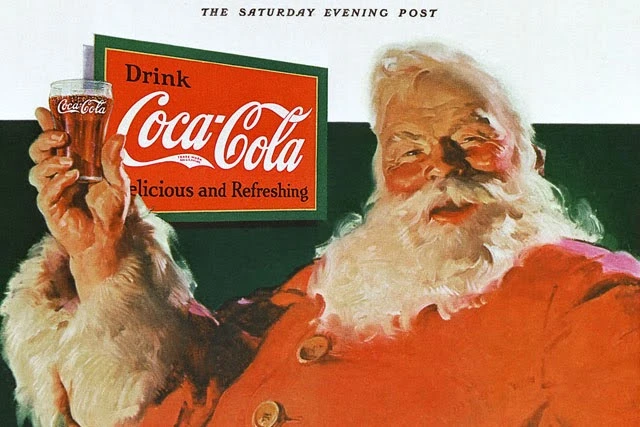 1931_ Fictional Influencers
1931_ Fictional InfluencersIn the 1970s, companies continued to use imaginary characters to influence people’s buying choices. A standout example is the Quaker Oats commercial featuring “Little Mikey.”This memorable ad shows a picky young boy named Mikey happily eating Quaker Oats’ Life cereal.
The goal was for viewers to see Mikey’s enjoyment and think they would too if he liked the cereal. This clever approach was so effective that the ad won a prestigious Clio Award in 1974 and remained popular on television for 13 years.
1950: The time of the Marlboro Man
When you look back at the 1950s, you’ll see how the Marlboro Man became a famous advertising symbol and changed the world of influencer marketing at that time. Played by different actors, this strong cowboy character was used to make smoking Marlboro cigarettes look cool, manly, and stylish. His tough image appealed to many men, influencing a generation that wanted to copy his look.
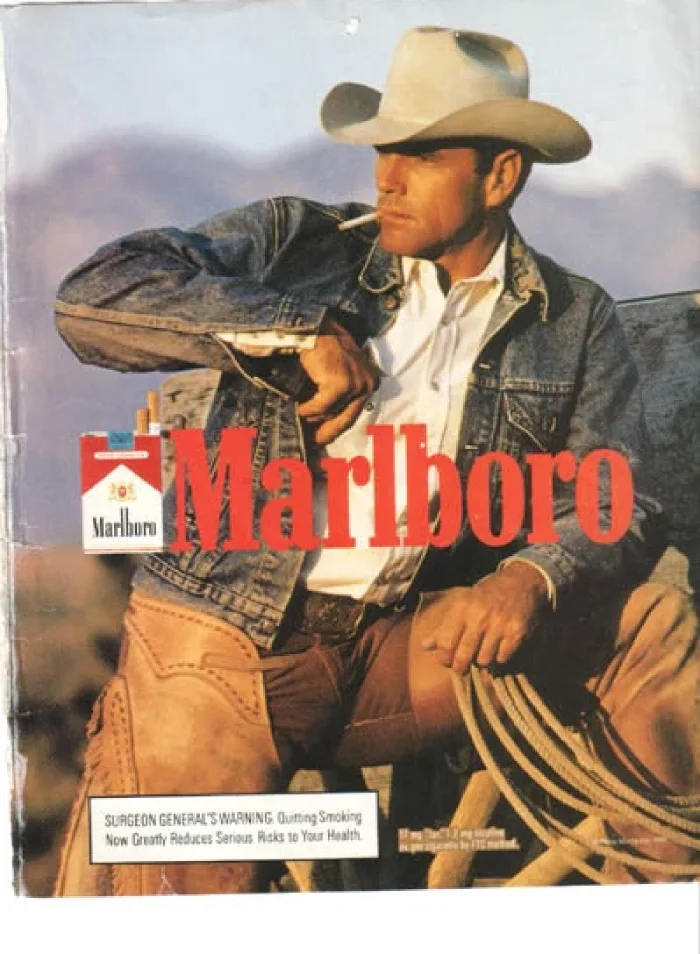 1950_ The time of the Marlboro Man
1950_ The time of the Marlboro ManThe Marlboro Man wasn’t just a character for selling cigarettes; he became a symbol of strength and independence. His image was so powerful that it helped make Marlboro one of the top-selling cigarette brands.
The Marlboro Man stayed as the face of the brand until 1999, lasting almost 50 years in advertising. His image significantly increased the brand’s visibility with just a single appearance in an ad.
Modern Influencer Marketing
The word “influencer” became widely popular around 2010. Since then, influencer marketing has grown a lot, with many campaigns becoming viral on social media. Platforms like Instagram and TikTok are now the go-to places for these successful campaigns.
Let’s look at the modern influencer marketing history that caught people’s attention and went viral on every platform.
- Old Spice’s Game-Changing ‘The Man Your Man Could Smell Like’ Campaign: Old Spice became super popular with their “The Man Your Man Could Smell Like” campaign. Before this, the brand seemed outdated, but when the funny ad with Isaiah Mustafa went viral, everything changed. It boosted sales and made Old Spice a top men’s body wash brand, setting a high bar for influencer marketing.
- Blending Real Life and Screen in Reality Shows: Reality TV shows like The Bachelor and Keeping Up With The Kardashians blended real life with screen life, making stars seem more relatable and authentic. Their rise in popularity brought the way for social media influencers.
These are simple examples of modern influencer marketing history. After seeing these campaigns go viral, brands began comparing themselves and wondering if they could achieve success by trying similar strategies.
Modern influencer marketing relies heavily on influencers to promote products or services. But how does it work? Right now, brands and businesses use influencer marketing platforms to connect with the right influencers and start collaborating with them.
Ainfluencer: The Top Platform for Influencer Marketing
Ainfluencer is the perfect influencer marketing platform for brands and businesses looking to collaborate with influencers. And do you know what the best part is? It’s completely free, so there’s no cost involved at all. The process is super straightforward too.
First, your brand creates a campaign, outlining what you need from the collaboration. After that, you can directly negotiate the terms of the agreement with the influencer you choose. This allows you to have clear communication and make sure the collaboration fits perfectly with your brand’s goals.
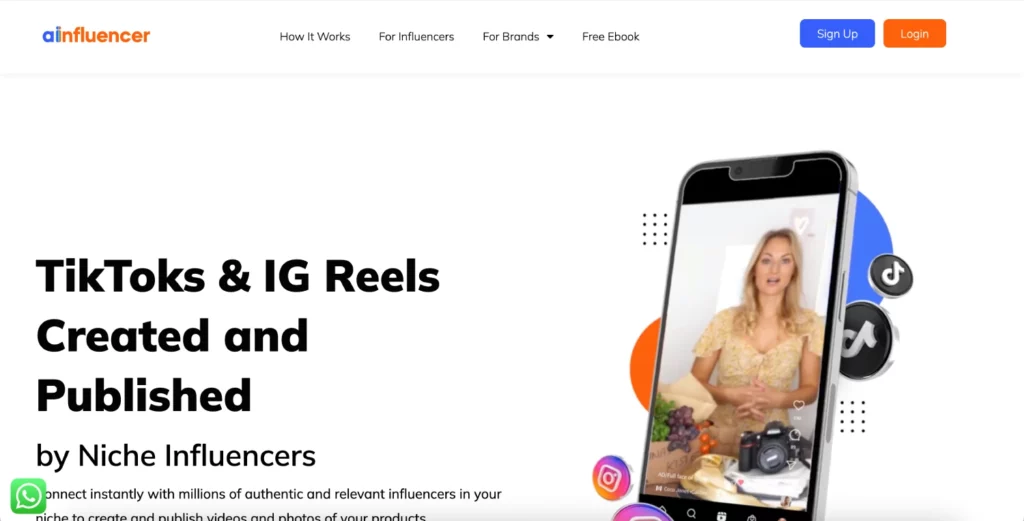 Ainfluencer
AinfluencerAinfluencer provides brands with a special way to connect with influencers globally, adpted to their budget. The platform’s advanced features let brands filter influencers by location, gender, niche, and other criteria, making the collaboration process smooth and efficient.
What makes Ainfluencer even more impressive is its secure payment system. The platform holds the funds until the influencer fulfills their commitment and delivers the content as agreed upon by the brand, ensuring reliability before the payment is released. Ainfluencer arranges everything, including:
- Creating content for products,
- Raising brand awareness,
- Driving sales, and
- Going viral on Instagram, and TikTok.
Conclusion
A look at the history of influencer marketing shows how it has improved over time. From early celebrity supports like Roscoe “Fatty” Arbuckle promoting Murad cigarettes to the iconic Marlboro Man, it’s clear that using famous figures to advertise products has always been a powerful strategy.
Today, with the rise of social media, influencer marketing has become even more powerful, helping brands reach different audiences through various platforms. This history shows us how important influencer marketing is and how it continues to evolve with new trends and technologies.
FAQs
1. What Was the First Brand to Use Influencer Marketing?
One of the earliest examples of influencer marketing dates back to 1760. The potter Wedgwood created a special tea set for the Queen of England. At that time, the monarchy was a major trendsetter, so Wedgwood used the Queen’s approval to promote his tea set as a luxury item. This clever move helped Wedgwood’s brand become highly successful by associating it with royal endorsement.
2. How Have Influencers Evolved?
Influencer marketing is changing, with new trends like the growing importance of micro and nano-influencers, the value of long-term partnerships, and a bigger focus on authentic, meaningful collaborations.
3. How Are Gen Z Influenced by Influencers?
Gen Z prefers user-generated content and influencer endorsements over traditional advertising. Influencers, seen as trustworthy and relatable, play a big role in shaping their purchasing choices.
 3 months ago
21
3 months ago
21




















 English (US) ·
English (US) ·